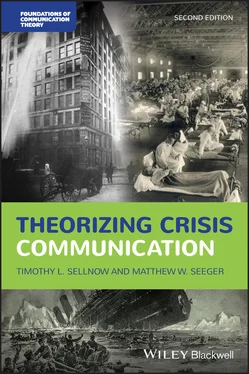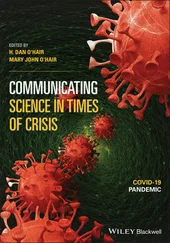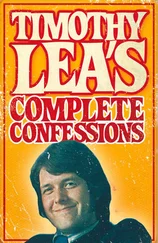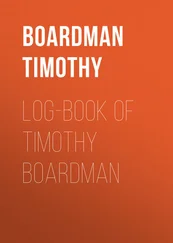Crisis comes from the Greek krisis and krinein. Krisis was a medical term used by the Greek writer and physician Hippocrates to describe the turning point in a disease. Krinein means to judge, separate, or decide. Crisis in its eastern etymology refers to a decision point requiring a decision of judgment. The Chinese symbol for crisis, we¯ijı¯, sheds light on the way the term is understood in some eastern cultures. Composed of two symbols, wei roughly translates to “danger, dangerous, endanger, jeopardize, perilous, precipitous, precarious, high, fear, afraid.” While there is some debate about ji, it may sometimes mean “opportunity” and may also mean “a crucial point” (Mair, 2010). According to this translation, we¯ijı¯ may refer to a dangerous situation and a crucial point.
Other fields have their own debates around definitions and terminology. Sociology, which probably has the longest tradition of research in this field, uses the term disaster to represent events that can be designated in time and space that have impacts on social units. These social units, in turn, enact responses and changes to manage the impacts (Fritz, 1961). Although many definitions have been proposed, most investigations of disaster refer to the physical impacts or problems unplanned or socially disruptive events cause for human communities (Kreps, 1984). Disasters create considerable harm to people and the physical infrastructure. They generally occur suddenly and prompt actions that can be taken to mitigate the harm. Quaretelli (2005) argued further that the term disaster is rooted in two fundamental ideas. First, disasters are social phenomena as opposed to simply natural forces. Natural forces, storm surges, earthquakes, or infectious diseases are sources of damage, while the disaster is the impact on social systems and processes. Second, a disaster involves the established social structure and associated changes, such as disruptions, to that structure. Although the term disaster is preferred by sociologists, it is conceptually very similar to the term crisis used in fields such as communication.
Closely associated with efforts to define crisis is the question: what causes a crisis? A number of perspectives have been offered to explain the cause of crisis (see Seeger et al., 2003, pp. 12–15). These include faulty decision making, oversights, accidents, natural changes, and unanticipated events. These may be summarized in three views: (1) normal failure and interactive complexity; (2) failures in warnings, faulty risk perception, and foresight, and (3) breakdowns in vigilance (Seeger et al., 2003, p. 12).
Normal accident theory (NAT) describes the ways in which normal, routine failures may lead to catastrophic crises. Developed by the sociologist Charles Perrow (1984), NAT emphasizes the interactive complexity that develops around larger scale socio-technical systems. Large systems, particularly those built on industrial or even societal scales, typically are technologically intense and create very high levels of complexity. The east coast electrical blackout of 2003 involved the interaction of environmental conditions (a very hot day and peak demand), inadequate maintenance in the form of tree trimming, a software bug, operator error, and an electrical grid that was highly integrated. The result was a loss of power to 55 million people in eight U.S. states and in Ontario, Canada. Perrow (1984) notes that failures such as these are characterized by interactivity and tight coupling. Interactivity simply means that one system, or subsystem, impacts another. In the case of the blackout, peak demand and hot weather caused transmission lines to expand and come into contact with trees that had not been trimmed. When systems become overly complex, managers cannot anticipate these interactions. Most so-called natural disasters (floods, hurricanes, tornadoes) involve the interaction of natural phenomena with human systems (dams, levees, building codes and housing developments). Tight coupling occurs when there is “no slack or buffer between two items” (Perrow, 1984, p. 90). Managers thus have little time or ability to correct failures. Quite literally, there is no room for error. Perrow’s work has been highly influential to the development of crisis theory. Among other things, his work predicts that as society becomes more complex, more crises will occur. Thus, accidents are becoming increasingly normal. FEMA reports that federal disaster declarations have been steadily increasing since 1953. In 1953, there were only 13 such declarations, yet 2011 saw 99 declarations, the highest ever recorded (FEMA, 2013).
A second but related view of crises posits that they are caused by failures in warnings, faulty risk perception, and inadequate foresight. This view follows the logic that when a risk or threat can be anticipated, it can be avoided. Turner (1976), for example, suggested a crisis is an “intelligence failure” or a “failure in foresight” (p. 381). Risks are often poorly understood or poorly communicated. Sometimes the signals of an impending crisis are not accurately interpreted or not assembled in ways that allow managers to connect the dots. Many crises, such as the Bhopal, Indiana/Union Carbide disaster, the New Orleans/Hurricane Katrina crisis, the Exxon Valdez oil spill, and the Flint water crisis can all be understood as failures to perceive, understand, or appropriately communicate risks.
A third view of crisis cause suggests these events occur when vigilance breaks down. This view of cause was initially popularized by the concept of groupthink developed by Janis (1972). According to this theory, decision systems, such as small groups, sometimes develop pressures to conform and reach consensus and a sense of invulnerability that reduces their ability to critically evaluate information and assess risk. Faulty decision making characterizes many crises, including the collapse of Enron and the 1986 Challenger Shuttle disaster. These faculty decisions systems and breakdowns in vigilance are often reflected in what Clarke (1999) described as fantasy planning. Disaster plans are often based on wildly optimistic assumptions and have little hope of actually working. Clarke characterizes such plans as rhetorical documents designed primarily to convince publics that technologies are safe and that appropriate precautions have been taken.
Although there is general consensus about what constitutes a crisis, there is almost always debate about what and who caused a crisis. Issues of causality are related to responsibility, accountability, and often liability. Therefore, as discussed in Chapter 10, strategic portrayals of blame, cause, and responsibility tend to dominate the discourse following a crisis. It is also important to recognize that the term carries considerable semantic weight and thus is used strategically to call attention to issues. Defining an issue as a crisis means that action must be taken in response and resources should be made available. Sometimes there is public disagreement regarding whether a situation constitutes a crisis, with advocates hoping to make the issue part of the public agenda precisely because it is a crisis.
As with the definition of crisis, scholars have also wrestled with definitions of communication and have offered a variety of competing and complementary views. Traditional notions of communication have tended to be more static and emphasize the role of the sender in a process of distributing messages to receivers. Receivers were largely seen as passive participants who were assumed to simply accept and act upon the message. The best-known formulation of this approach is Berlo’s (1960) sender-message-channel-receiver model. This model created a straightforward linear view of communication, a perspective that dominated many early emergency communication conceptualizations and tended to frame crisis communication as a unidirectional process of issuing warnings or alerts through systems such as the emergency broadcast system or community-based weather sirens.
Читать дальше












